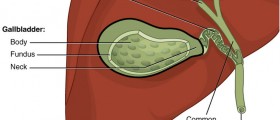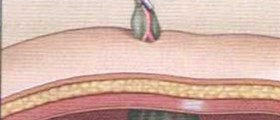
Gallbladder cancer is not so common malignant disease. Only in case the tumor is diagnosed in early stage, it can be successfully treated. Unfortunately, this is not possible in all cases and many patients visit their doctors once the tumor has considerably progressed. Due to its location gallbladder cancer spreads directly to the liver and it can also affect regional lymph nodes. In majority of cases the first symptoms and signs of the disease include abdominal pain, jaundice and vomiting.
There are certain factors which contribute to the occurrence of gallbladder cancer. Suffering from gallstones is only one of them. One more illness associated with gallbladder cancer is porcelain gallbladder, a condition which features with calcification of the gallbladder. The tumor occurs more in certain ethnic groups.
Gallbladder cancer is more common in women and it generally occurs between the age of 50 and 60. Furthermore, obese people are more susceptible to gallbladder cancer than people with normal weight. And finally, the risk is increased in all people suffering from chronic cholecystitis and cholelithiasis.
Symptoms of Gallbladder Cancer
The most common symptom of gallbladder cancer is jaundice. Patients' skin and visible mucous membranes as well as whites of the eyes become yellow. Furthermore, patients report pain in the abdomen. There is also nausea accompanied with vomiting. The growth of the tumor leads to enlargement of the gallbladder. If the tumor blocks the bile duct the growth of the gallbladder may even increase. This enlargement can be visualized on ultrasound of the abdomen.
Apart from the previously mentioned additional symptoms and signs of gallbladder cancer include fever, tarry stools, bloating, loss of appetite/weight loss and itching.
Diagnosis and Treatment for Gallbladder Cancer
In some patients the tumor can be accidentally diagnosed after routine cholecystectomy performed due to gallstones. In other cases patients report symptoms and signs of the disease and the cancer is confirmed with certain tests, examinations and finally pathohistological evaluation.
The cornerstone of treatment for gallbladder cancer is surgery. The tumor is resected together with nearby tissues and regional lymph nodes.
Unfortunately, even with extensive surgery majority of patients do not live longer than a year after the diagnosis has been confirmed. Inoperable patients are treated with endoscopic stenting of the biliary tree. Chemotherapy and radiation therapy are two more treatment modalities for patients suffering from gallbladder cancer. In spite of all the attempts the tumor soon spreads to nearby organs (the liver, bile duct, stomach and duodenum) and eventually leads to death.
















Your thoughts on this
Loading...